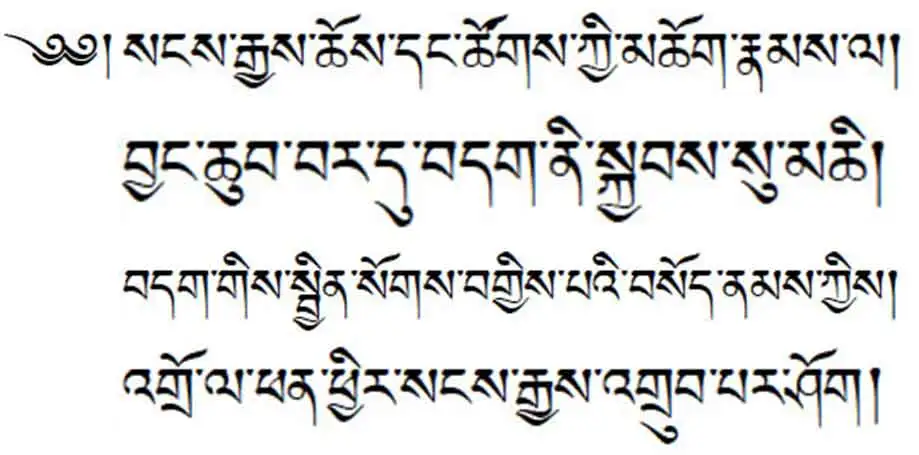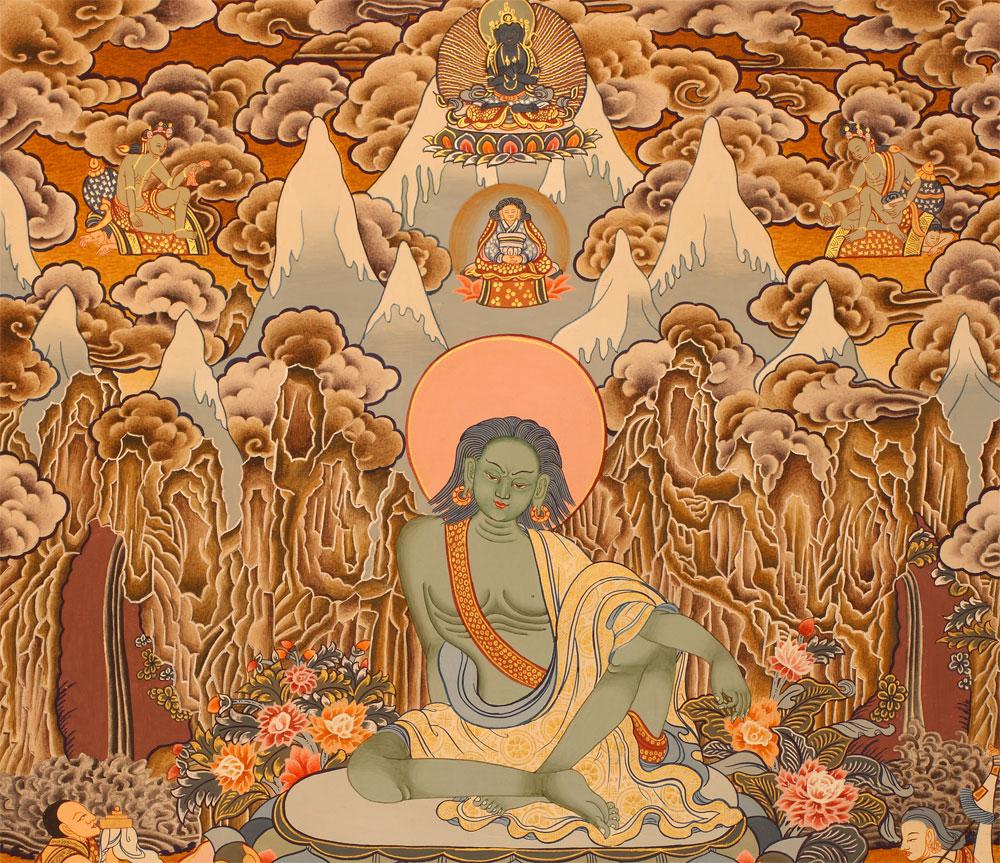The Short Refuge Prayer in Buddhism may appear brief at a glance, but its essence is a complete guide to spiritual awakening. This sacred verse encapsulates the entire path to enlightenment, expressing the heart of Mahayana Buddhist practice through the act of taking refuge in the Three Jewels: the Buddha, the Dharma, and the Sangha. To truly understand the depth of this prayer, we must dive into its meaning, its origins, and how it leads practitioners on the journey toward liberation.
The Short Refuge Prayer
In the Buddha, the Dharma, and the Sangha most excellent,
I take refuge until enlightenment is reached.
By the merit of practicing generosity and other good deeds,
may I attain Buddhahood for the sake of all sentient beings.

Why Begin With the Three Jewels?
Every Buddhist practice begins by invoking the Three Jewels — the Buddha, the Dharma, and the Sangha — because they are the ultimate sources of refuge. They represent perfect guidance, flawless teaching, and inspired companionship on the path to freedom.
- The Buddha is the one who awakened to the ultimate truth, completely purified of delusions and fully developed in compassion and wisdom.
- The Dharma is the actual teaching — the path that leads to liberation from suffering.
- The Sangha is the noble community of practitioners who embody and uphold the Dharma.
Taking refuge in them aligns the mind with purity, purpose, and peace. It anchors our motivation and transforms our actions into steps toward awakening.
The Buddha: The Awakened One
Born as a prince in a life of unimaginable luxury, Siddhartha Gautama renounced everything after confronting the realities of aging, sickness, and death. Driven by compassion and wisdom, he abandoned comfort not out of despair, but to seek lasting happiness for all beings.
After years of ascetic hardship and deep meditation, he realized the true nature of the mind, transcending suffering and attaining enlightenment under the Bodhi tree. This state of complete purity and omniscient wisdom is what we call Buddhahood.
The Tibetan term for Buddha, Sangye, reflects this:
- Sang – Fully awakened from ignorance.
- Gye – Fully blossomed in wisdom and compassion.
Through his realization, the Buddha taught the Four Noble Truths — the universal blueprint for understanding suffering and attaining liberation.
Dharma: The Eternal Truth
Dharma isn’t just spiritual doctrine. It is the universal law of cause and effect, the natural truth uncovered by the Buddha. It shows us:
- The cause and cessation of suffering.
- The path to happiness through ethical living, meditation, and wisdom.
Buddha stated:
Avoid all unwholesome actions, accumulate great wealth of virtues and tame your mind — this is the teaching of Buddha.
The Eightfold Path offers practical steps: right view, intention, speech, action, livelihood, effort, mindfulness, and concentration. This path leads to the ultimate cessation of suffering — Nirvana.
Dharma acts like a mirror, revealing the true nature of our mind. It is the medicine that cures emotional afflictions, the light that dispels ignorance, and the ambrosia that transforms negativity into wisdom. It is the compass we can rely on — not only for this life but for all future lives.
The Sangha: Spiritual Companions
The Sangha represents those who have actualized the Dharma and inspire others through their wisdom and realization. In Mahayana Buddhism, the Sangha includes highly realized beings who have attained the first bhumi or beyond — profound stages of enlightenment.
Although we may not yet be among these realized beings, our fellow practitioners are our support system. Together, we strive for harmony, compassion, and mutual encouragement.
Through the Sangha, we are reminded that enlightenment is achievable and that we are not alone on this journey.
The Mahayana Perspective: Refuge Until Enlightenment
A significant difference between Hinayana and Mahayana refuge lies in motivation and scope. Hinayana refuge is often limited to this lifetime, aiming for individual liberation. Mahayana refuge is limitless in time and selfless in aim — we take refuge until enlightenment is reached, not just for ourselves, but for the benefit of all sentient beings.
This altruistic intent is the seed of Bodhicitta, the supreme motivation to become a Buddha in order to help others attain liberation.
Bodhicitta: The Heart of the Refuge Prayer
The final lines of the Short Refuge Prayer invoke Bodhicitta, the noble aspiration to awaken not for oneself, but for the welfare of others. This is the golden thread that runs through Mahayana Buddhism.
By the merit of practicing generosity and other good deeds, may I attain Buddhahood for the sake of all sentient beings.
Here, we commit to cultivating the Six Paramitas (Perfections):
- Generosity – Giving without expectation.
- Ethical Discipline – Avoiding harm and doing good.
- Patience – Courageously facing adversity.
- Joyous Effort – Diligence infused with joy.
- Concentration – Meditative focus that brings inner clarity.
- Wisdom – Insight into emptiness and interdependence.
Together, these qualities shape the bodhisattva path — the most noble journey one can undertake.
Milarepa: Living Proof of the Dharma’s Power


One of the most revered yogis in Tibetan history, Jetsun Milarepa, exemplified the transformative power of refuge and Dharma. From a troubled youth to a fully enlightened being, his life teaches us that total dedication to Dharma — even in hardship — brings unshakable peace and ultimate freedom.
When asked if he was the reincarnation of a buddha, Milarepa humbly replied:
If you believe Dharma can purify all obscurations in one lifetime, then you too can achieve Buddhahood.
His story reminds us that enlightenment is not reserved for the divine — it is possible for anyone who commits fully to the path.
Why This Prayer is So Powerful
Despite its brevity, the Short Refuge Prayer is a complete spiritual roadmap. It contains:
- The path (Dharma)
- The guide (Buddha)
- The companions (Sangha)
- The motivation (Bodhicitta)
- The method (Six Paramitas)
- The goal (Enlightenment for all beings)
By reciting this prayer with understanding and sincerity, we align our heart with the core of Buddhist practice.
Final Thoughts: Practicing the Refuge Prayer in Daily Life
Taking refuge is not a one-time ritual — it’s a lifelong commitment. When practiced daily:
- It strengthens your connection to wisdom and compassion.
- It builds resilience against suffering and delusion.
- It inspires you to act for the benefit of others.
The Buddha is our example.
The Dharma is our path.
The Sangha is our support.
By taking refuge again and again — with understanding, devotion, and purpose — we awaken the Buddha-nature within us.
FAQ
What does taking refuge in the Three Jewels mean in Buddhism?
Taking refuge in the Three Jewels—Buddha, Dharma, and Sangha—is a foundational practice in Buddhism. It signifies a commitment to follow the path of enlightenment by trusting the Buddha as the teacher, the Dharma as the teaching, and the Sangha as the supportive community of practitioners.
Why is the refuge prayer important in Mahayana Buddhism?
In Mahayana Buddhism, the refuge prayer is not just a vow for personal liberation but also a commitment to attain enlightenment for the benefit of all beings. It includes the generation of bodhicitta, the altruistic intention to become a Buddha to help others.
What is the difference between the Three Jewels: Buddha, Dharma, and Sangha?
Buddha refers to the fully awakened one who shows the path.
Dharma is the teaching that leads to liberation.
Sangha is the community of practitioners who preserve and practice the Dharma.
How is the concept of bodhicitta connected to the refuge prayer?
Bodhicitta, the compassionate wish to achieve enlightenment for the sake of all beings, is often included in Mahayana refuge prayers. It transforms the act of taking refuge from a personal pursuit into a universal one rooted in compassion and selflessness.
FOLLOW US ON




Thanks for this wonderful and meaningful blog🙏
Refuge is a momentum of being back, which in time will cause the awareness of being now awakened from all dark dreams. Mind calming, emotions calm. Emotions calming, body calms. Body calming, visions calm. Visions calming, relations calm. Relations calming, planet calms. Planet calming, universe calms. Universe calming, here and now calms. Here and now calming, next step will be beautiful and graceful embracing and feeding each sentient being past, future, now and potential. We are blessed ☺️☀️☀️☀️☀️☀️☀️☀️☀️🌿🌼🌿🌼🌈🌈🌈
Thank you for precious teaching 🙏🙏🙏🥰 I dedicate with deepening love
Some truly nice and utilitarian info on this website, besides I believe the layout contains wonderful features.
Would you be keen on exchanging links?
Pingback: Transforming Suffering in Buddhism: Gampopa’s Path from Samsara to Enlightenment - buddhistpsy.com